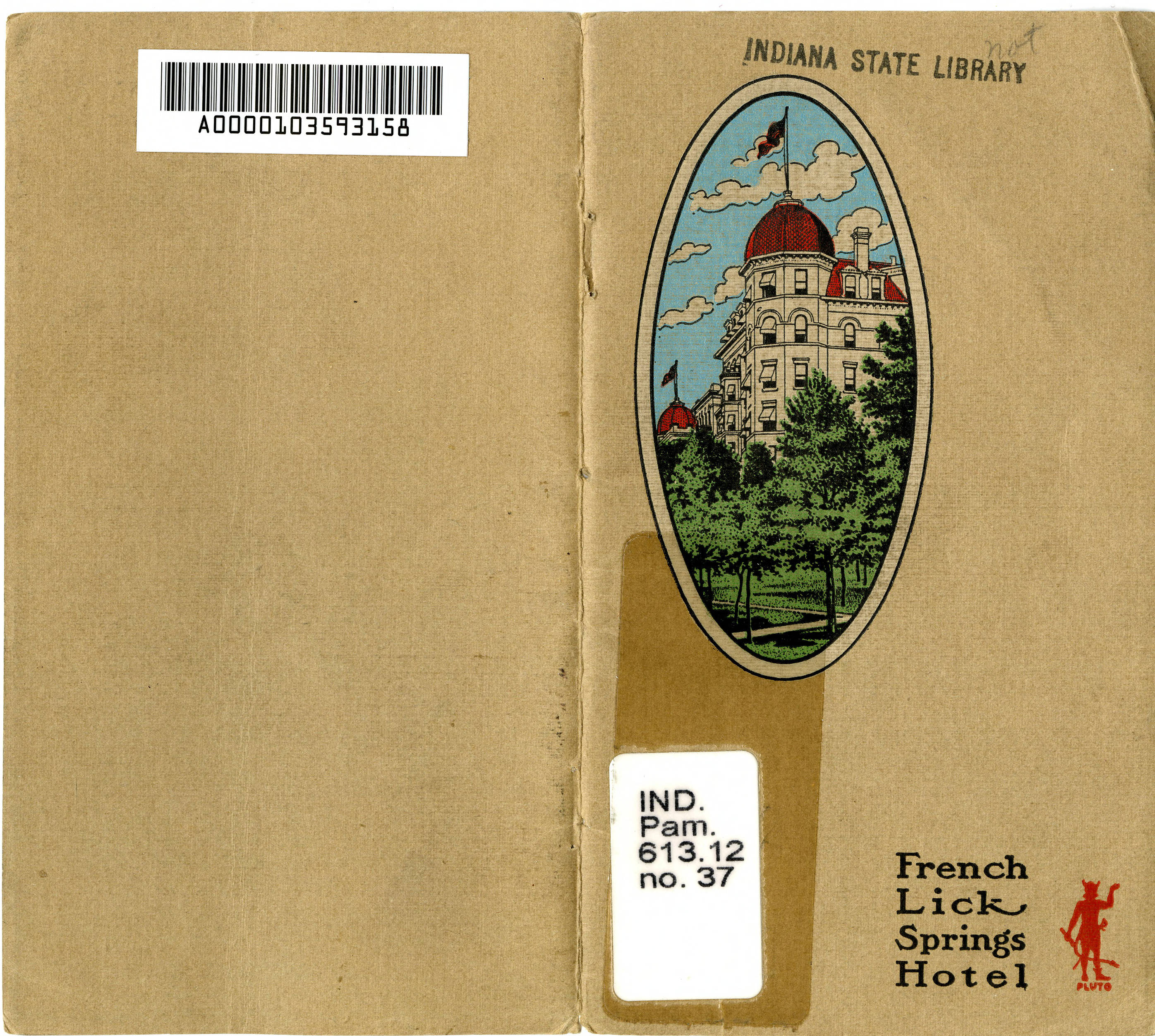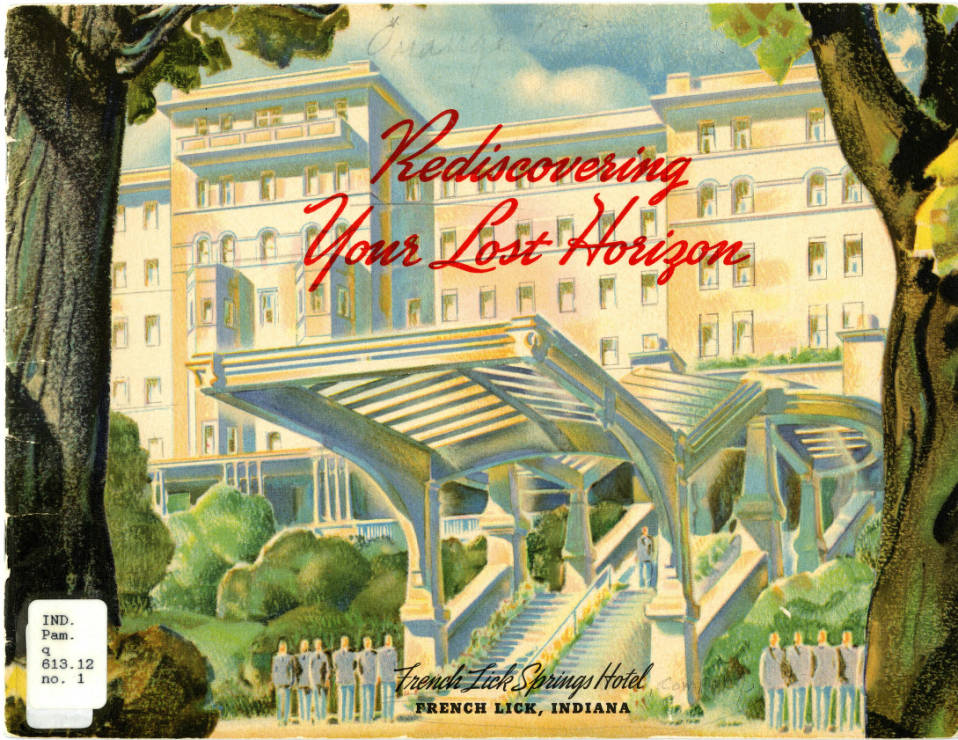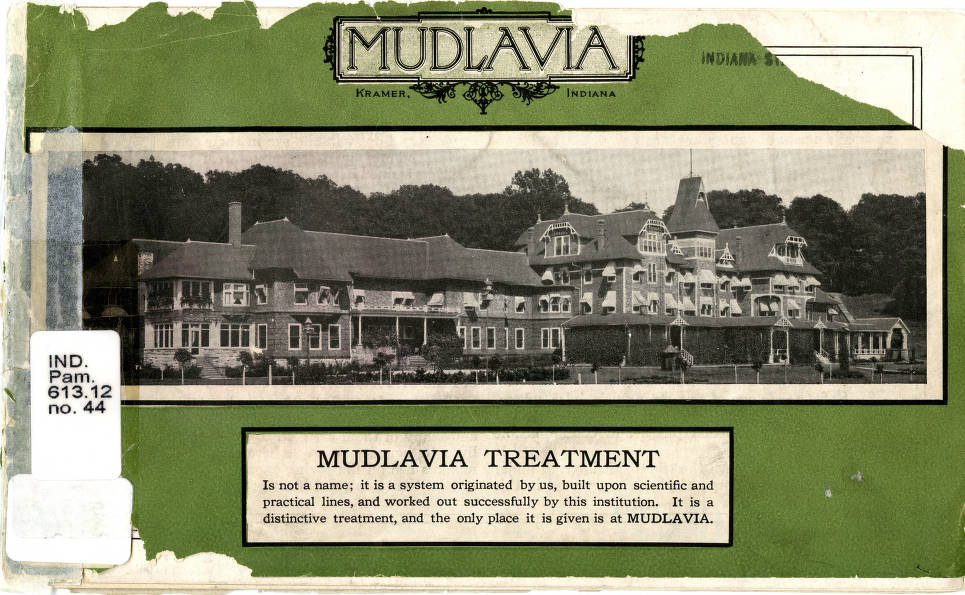What do the small Indiana towns of French Lick, West Baden, Martinsville and Kramer have in common? In the late 19th century to the mid-20th century, in these towns, you could find relief from what ailed you; especially digestive issues and rheumatism. If you lived during these times, you might find refuge from your ailments at many of the mineral springs found in rural Indiana.
You might have found their main advertising focused on the curing properties of the mineral springs’ water via their natural healing content in relaxing surroundings. With “the combination of magnificent scenery and pure, bracing mountain air, with the medicinal virtues of the springs and the comforts of a palatially equipped and perfectly conducted hotel,” you could have been one of the thousands of tourists and health seekers seeking the “veritable Elixir of Life.”
 Today, you can still visit French Lick and West Baden and stay at their popular resorts, but you won’t be able to partake in their famous waters. The Pluto Water of French Lick, with its devilish likeness, and the Sprudel Water of West Baden, with its friendly elf, are now bygone images.
Today, you can still visit French Lick and West Baden and stay at their popular resorts, but you won’t be able to partake in their famous waters. The Pluto Water of French Lick, with its devilish likeness, and the Sprudel Water of West Baden, with its friendly elf, are now bygone images.
Both waters had high native content of mineral salts, making them an effective laxative usually within one hour of ingestion, a selling point emphasized in the company’s promotional literature. Sodium and magnesium sulfate, both known as natural laxatives, and lithium salts were the active ingredients in the water. Sorry, you can’t buy Pluto Water anymore. The sale of Pluto Water ended in 1971 when lithium became a controlled substance.
 Meanwhile, you could defeat your rheumatism at the Martinsville Sanitarium, as their motto “Where Rheumatism meets Its Waterloo” expresses, or at the Mudlavia Resort in Kramer. Both spas offered relief from the pain of rheumatism, referred to today as osteoarthritis, through soaking in mineral waters or using the method of being lathered from head to toe in hot mud.
Meanwhile, you could defeat your rheumatism at the Martinsville Sanitarium, as their motto “Where Rheumatism meets Its Waterloo” expresses, or at the Mudlavia Resort in Kramer. Both spas offered relief from the pain of rheumatism, referred to today as osteoarthritis, through soaking in mineral waters or using the method of being lathered from head to toe in hot mud.
In the Indiana Pamphlet Collection, the Indiana State Library has many brochures and pamphlets about these and other bygone mineral spring spas and resorts. Some of these rare and fragile materials are now available in the Indiana Historical Print Collection of the Indiana State Library’s Digital Collections. In the collection, one can find pamphlets from West Baden, White Sulphur Springs in Montezuma, Ind., Nature’s Rest and Water Cure in Trinity Springs, Ind. and the Dillsboro Sanitarium Company in Dillsboro, Ind.
 For more information, visit the Mineral Springs Spas in Indiana page of the state library’s website. Information about Mudlavia, Indiana’s “other resort” can be found on the Indiana public media page. Finally, one may browse the “26th annual report of the Department of Geology and Natural Resources of Indiana, 1901” for a detailed report on the mineral waters of Indiana.
For more information, visit the Mineral Springs Spas in Indiana page of the state library’s website. Information about Mudlavia, Indiana’s “other resort” can be found on the Indiana public media page. Finally, one may browse the “26th annual report of the Department of Geology and Natural Resources of Indiana, 1901” for a detailed report on the mineral waters of Indiana.
This post was written by Chris Marshall, digital collections coordinator for the Indiana Division at the Indiana State Library.
